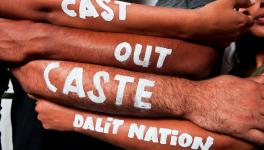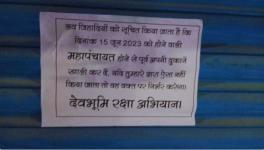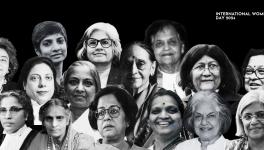In America, as in India, Talking Caste is not Hindu-Phobic
On 9 May 1916, a young BR Ambedkar presented a paper at Colombia University in the United States titled Castes in India: Their Mechanism, Genesis and Development. He referred to caste as a “local problem, but one capable of much wider mischief”. He wrote, “...if Hindus migrate to other regions on earth, Indian caste would become a world problem.”
More than a century later, as one of the biggest corporations, Google, battles allegations of caste discrimination in the United States, the predictive value of Ambedkar’s words is evident. Recently, Google News cancelled a scheduled talk by Thenmozhi Soundararajan, the founder and executive director of Equality Labs, after many Google employees (of Indian origin or Indians) opposed it. The discussion was supposed to mark Dalit Equality Month, celebrated every April to mark the month Ambedkar, the first law minister of independent India and its leading anti-caste activist, was born. Equality Labs is a leading non-profit group in the United States that advocates Dalit rights. According to its 2016 survey, a third of Hindu students in the United States reported experiencing caste discrimination.
Thenmozhi was subjected to an organised campaign led by a section of Google employees, who called her “Hindu-phobic” and “anti-Hindu”. The name-calling went on in emails her opponents sent to company bosses and documents they posted on a mailing list that thousands of Indian employees access.
Instances of caste discrimination are rising in the 1.5 million-strong Indian community, which likes to call itself a “model minority” but has fewer than 1.5% Dalits, according to an oft-cited 2003 study by the Center for the Advanced Study of India in the University of Pennsylvania. It would seem that American companies can no longer gloss over these representation, inclusion, and exclusion concerns. However, the Google employees who campaigned against Thenmozhi’s talk do not seem to notice the winds of change.
Thenmozhi and her organisation consistently raised a voice against the exclusion and discrimination of Dalits in the United States. She has brought attention to fissures within the Indian Hindu community in a struggle to correct the iniquities that caste breeds. During the Black Lives Matter protests sparked by the killing of George Floyd, tech companies were encouraged to organise conversations on caste with their employees. At the time, Thenmozhi was invited to speak at meetings organised by Microsoft, Salesforce, Airbnb, Netflix and Adobe. But this, too, does not seem to matter to Google employees who opposed her talk. Those who did care, such as Tanuja Gupta, who organised the discussion by Thenmozhi, have had to resign.
The Google episode is not the first time Hindutva organisations and conservative Hindu groups have locked horns with Equality Labs and other defenders of Dalit rights in the United States. Bringing up the discrimination Dalit Americans face in places of work or trying to reform school curriculums to reflect the reality of caste has always sparked their anger.
However, the efforts of anti-caste and anti-discriminations groups that take up the cause of Indian Americans are bearing fruit. Of late, The Washington Post noted critically of Google that the diaspora is fuelling the “Hindu nationalist movement”, which has “arrived inside Google”. Other American media houses are slowly upping their awareness of caste and consequent discrimination issues. Besides, corporate giants in the United States are being called out for their exclusion of Dalit employees. Such attention puts a spanner in the dream of the Hindu right to project pan-Hindu unity at the cost of those systematically excluded by caste.
Google CEO Sundar Pichai—who is of Indian origin and presumably well-versed in what caste discrimination entails—has remained silent as developments in his company unfold. Thenmozhi had directly approached him to intervene as employees campaigned against her but to no effect. Pichai’s silence is galling, for the Black Lives Matter (BLM) movements had prompted leading tech companies, including Google, to address race issues. Even at the time, Pichai and Google were criticised for ignoring caste and embracing BLM for optics.
Now, Pichai’s failure to take a stand on caste sends the impression that Google News has no qualms about bias—other than raising questions about his socio-political position.
Some years ago, a Dalit employee at Cisco Systems, another tech giant, had raised discrimination by two senior managers, members of dominant castes in the traditional Hindu hierarchy. According to the employee, the company had unearthed evidence of being denied a raise and facing exclusion from priority tasks, which the allegedly company suppressed. Dalit and human rights groups campaigned for the employee and a civil rights case was registered in California. The case is being heard in the courts.
An adverse verdict in this matter would hurt Cisco’s image as an employer and undoubtedly involve compensating the aggrieved employee, other than action against the two “upper” caste managers. However, it would also set a much-needed legal precedent in the United States against caste-based discrimination. Further, a verdict favouring the employee would prove the vacuousness of the “Hindu unity” cause that the Hindutva groups are peddling. It would be a tremendous relief to the employees silently battling caste without institutional assistance or acknowledgement.
The present case has polarised organisations such as Equality Labs and the Ambedkar International Centre, a civil rights body in the United States, against the Hindutva or Hindu groups, who wish to dilute such complaints or distract from the issues they raise.
However, it is an opportune moment to legitimise anti-caste movements and stop stigmatising those like Thenmozhi who struggle for Dalit dignity in the United States. Silencing discussion around caste or name-calling those opening up conversations about it is akin to white supremacists opposing critical race theory in American schools and colleges. They call it reopening old wounds that will hurt the psyche of young students and ensured such classes are excluded from the curriculum in many States: just as the Hindu right opposes the inclusion of caste in school courses. However, caste and race are live issues and far from settled. In California, where the school curriculum is reviewed every ten years, the possibility that caste would be taught and discussed is genuine.
In 2005, there was a commotion over caste as petitions from human rights groups and counter-petitions from Hindutva supremacist groups struggled for its inclusion and exclusion (respectively). The rights groups won that debate, sort of, but by 2015, the discourse peddled by so-called spiritual-cultural organisations started to gain the upper hand. Conservative Hindu American Foundation (HAF), a non-profit with roots in the World Hindu Council America, pushed through the dilution or erasure of caste from syllabi. It also watered down the significant role caste plays in Hindu societies and erased Dalit, Muslim, Sikh and Christian histories in textbooks. However, earlier this year, caste was included in the entire California State system as a ground in its non-discrimination policy. This means that the biggest public university system in the United States, with 500,000-odd students on 23 campuses, now will address caste bias. Indeed, the California State school syllabus is not as egalitarian as it can be. It sanitises caste concerns, but such changes show that the resistance is also growing.
What is happening in the United States is a battle of ideas, where substantive issues of justice and equality are battling phoney notions of unity that push social fissures under the carpet. This battle is opening up new vistas to discuss and end caste discrimination decisively.
The author is an independent journalist. The views are personal.
Get the latest reports & analysis with people's perspective on Protests, movements & deep analytical videos, discussions of the current affairs in your Telegram app. Subscribe to NewsClick's Telegram channel & get Real-Time updates on stories, as they get published on our website.
























